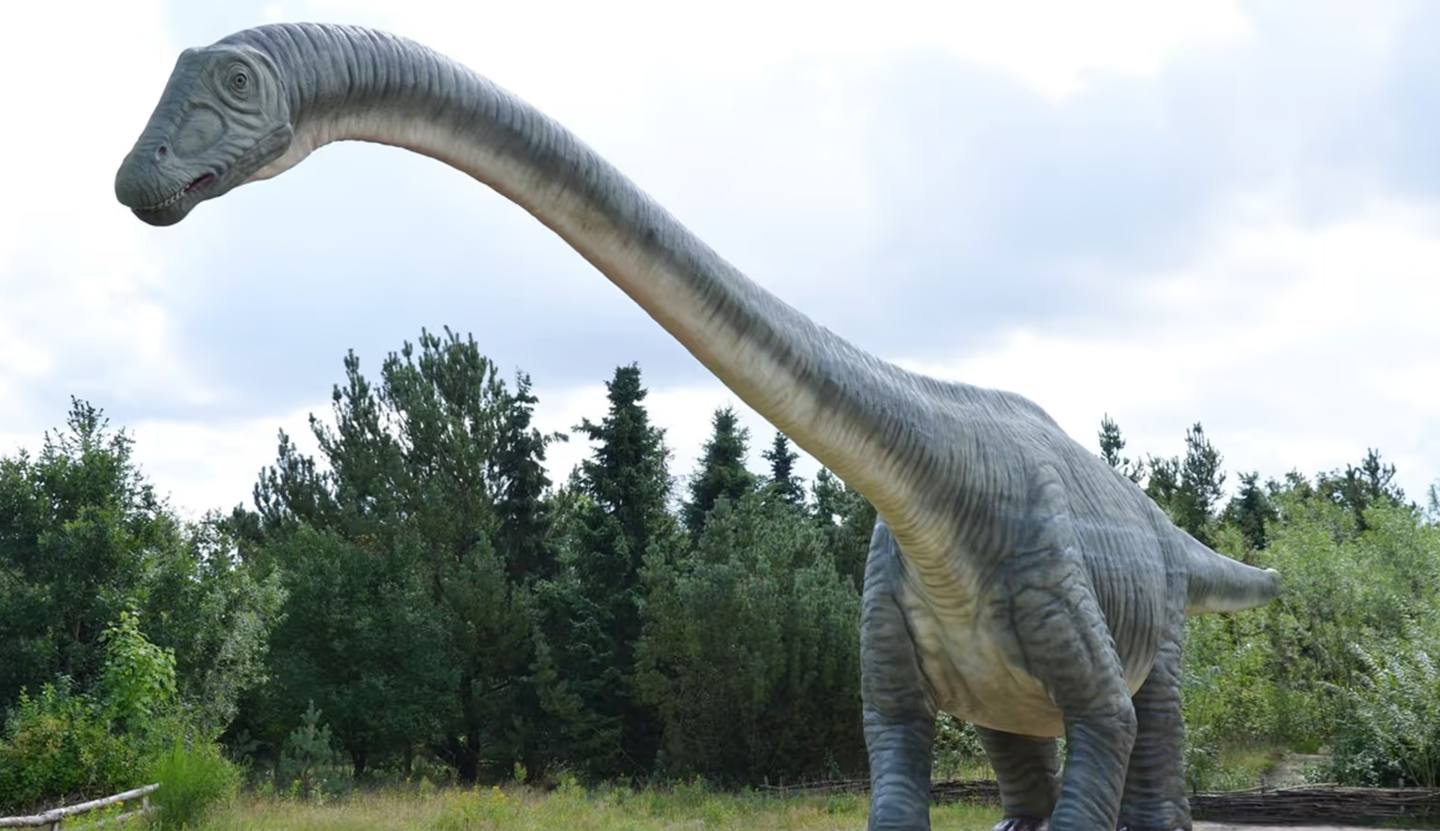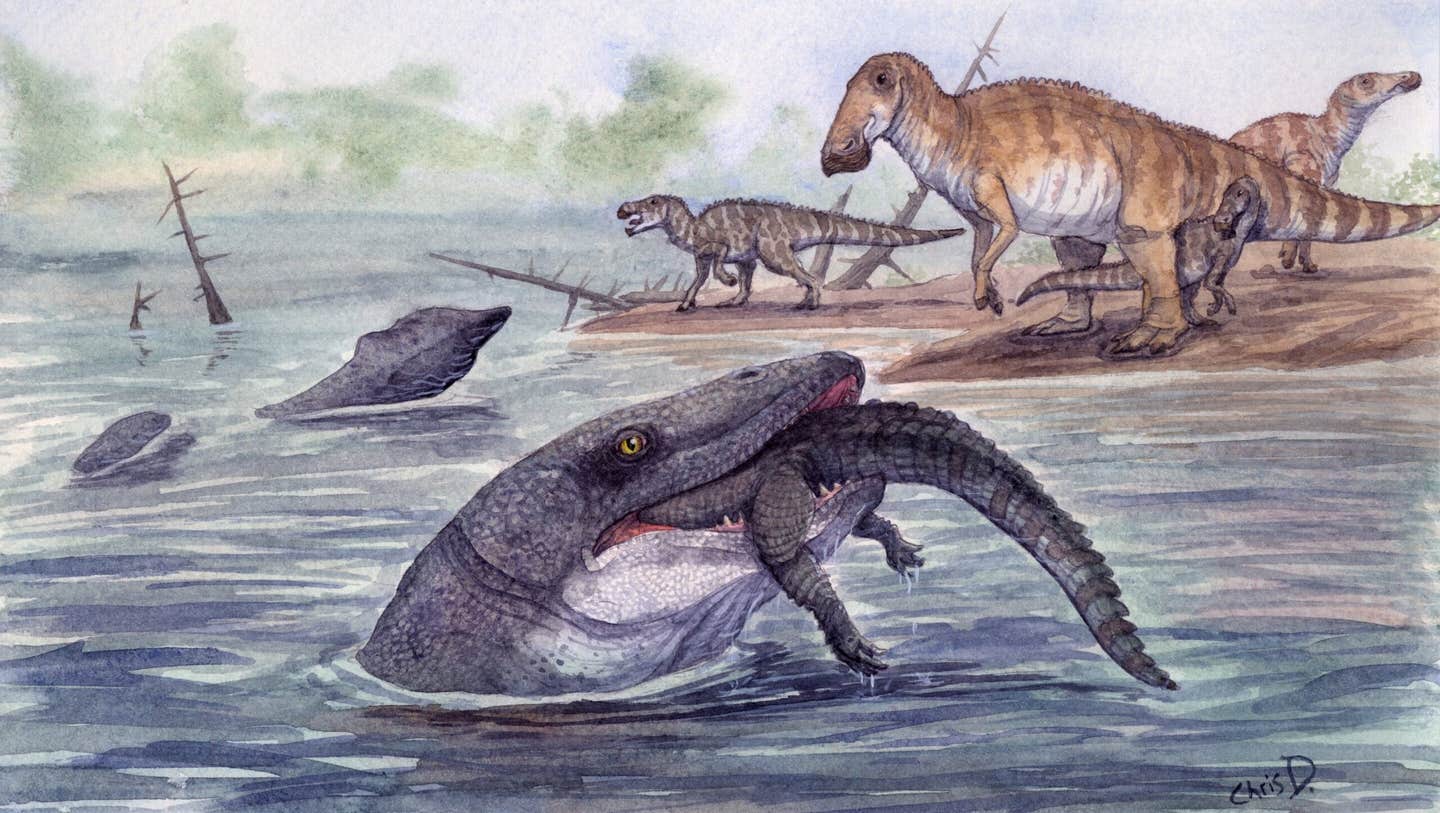75 million year old titanosaur species discovered in central Spain
Researchers discover Qunkasaura pintiquiniestra, a new dinosaur species from Spain’s Late Cretaceous period. The find deepens understanding of prehistoric Europe.

The discovery was made possible by a large collection of fossils unearthed during the construction of the Madrid-Levante high-speed train tracks starting in 2007. (CREDIT: CC BY-SA 3.0)
A new species of sauropod dinosaur, Qunkasaura pintiquiniestra, has been discovered in Cuenca, Spain, thanks to ongoing research by Portuguese paleontologist Pedro Mocho and his team at the Instituto Dom Luiz of the University of Lisbon.
Their findings, published in Communications Biology, shed light on the diverse dinosaur fauna that roamed southwestern Europe during the Late Cretaceous, around 75 million years ago. This discovery enriches the understanding of the region's prehistoric ecosystems and introduces new questions about the evolution and migration of these massive creatures.
The discovery was made possible by a large collection of fossils unearthed during the construction of the Madrid-Levante high-speed train tracks starting in 2007. This excavation effort revealed over 12,000 fossil specimens, transforming the site into one of the most significant collections of fossil vertebrates from the Upper Cretaceous period in Europe.
The fossils have been thoroughly studied over the years with support from national research projects and the Junta de Comunidades de Castilla-La Mancha. These projects have not only helped researchers understand the prehistoric life of the region but have also led to the identification of several new species.
One of the key findings from Mocho’s study is the presence of two distinct lineages of saltasauroids in the same fossil site, which is a rare occurrence. According to Mocho, “The study of this specimen allowed us to identify for the first time the presence of two distinct lineages of saltasauroids in the same fossil locality. One of these groups, called Lirainosaurinae, is relatively known in the Iberian region and is characterized by small and medium-sized species, which evolved in an island ecosystem."
Related Stories
During the Late Cretaceous, Europe was a collection of islands, which shaped the evolutionary path of its dinosaur populations. The Lirainosaurinae lineage is already known in the Iberian Peninsula, with species that adapted to island life. However, Qunkasaura pintiquiniestra belongs to a different group of sauropods that appears to have arrived in the region much later, around 73 million years ago. This discovery opens new questions about how these species migrated and when.
One of the reasons this fossil site stands out is the abundance of large partial skeletons, particularly of sauropod dinosaurs. In fact, Qunkasaura pintiquiniestra is one of the most complete sauropod skeletons ever found in Europe. The skeleton includes cervical, dorsal, and caudal vertebrae, along with parts of the pelvic girdle and limbs.
These well-preserved fossils offer significant insights into the anatomy and lifestyle of these dinosaurs. The unique morphology of the tail vertebrae, in particular, has expanded what is known about non-avian dinosaurs in the Iberian Peninsula.
The study identifies Qunkasaura as a member of the opisthocoelicaudine saltasaurids, a group that existed in the northern hemisphere, known as Laurasia. Most other Late Cretaceous sauropods found in southwestern Europe, like Lohuecotitan pandafilandi, belong to the Lirainosaurinae group, which is thought to be exclusive to Europe.
What makes the Lo Hueco fossil site so remarkable is that it is the only known place where both groups coexisted. Mocho’s research suggests that the Lo Hueco site may have been a unique meeting point for different sauropod lineages, and it proposes a new group of titanosaurs called Lohuecosauria, which includes species from both lineages. Lohuecosaurs are thought to have originated on the southern continents, part of Gondwana, before spreading to other regions.
The name Qunkasaura pintiquiniestra reflects both geographic and cultural elements from the Cuenca region. The term "Qunka" comes from the ancient name for the Cuenca and Fuentes area, while "Saura" is derived from the Latin word for lizard and serves as a tribute to painter Antonio Saura.
The "pintiquiniestra" part of the name references Queen Pintiquiniestra, a character from Cervantes' Don Quixote. This combination of scientific and local references highlights the deep connection between paleontology and regional history.
As Mocho points out, this discovery is just the beginning. “Fortunately, the Lo Hueco deposit also preserves several skeletons of sauropod dinosaurs to be determined, which may correspond to new species and which will help us understand how these animals evolved.” The fossils from Lo Hueco have already made a significant contribution to the understanding of Late Cretaceous ecosystems, and there is still much more to uncover.
The research into Qunkasaura pintiquiniestra forms part of a larger effort by the Evolutionary Biology Group at UNED, which is focused on studying dinosaur ecosystems in the central Iberian Peninsula. Part of the skeleton of Qunkasaura is already on display at the Paleontological Museum of Castilla-La Mancha in Cuenca, where it joins other important discoveries from the region.
Through this new finding, the ongoing work at Lo Hueco continues to shed light on the diversity and complexity of life in the Late Cretaceous period in Europe, giving us a glimpse into a time when the world’s largest creatures roamed the land.
Note: Materials provided above by The Brighter Side of News. Content may be edited for style and length.
Like these kind of feel good stories? Get The Brighter Side of News' newsletter.



